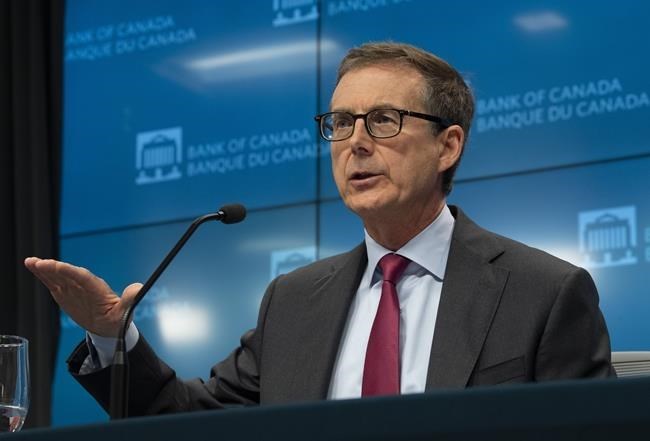OTTAWA — The slower rebound facing women, youth and low-wage workers could pose a threat to a broader economic recovery from the COVID-19 pandemic, Canada's top central banker said Thursday in a push to find ways to even out an uneven path out of the crisis.
Bank of Canada governor Tiff Macklem warned in a noon-hour speech that uneven recessions that affect some workers and sectors more than others tend to be longer and leave a larger mark on the labour market.
He noted in the speech to the Canadian Chamber of Commerce that women and young people are more likely now to be permanently laid off from their jobs due to the pandemic.
People permanently laid off take on average twice as long to return to work as people on temporary layoff, Macklem said, risking long-term damage to their job prospects and a creating lasting drag on earnings for youth in particular.
Macklem said the central bank is doing everything it can to support growth and get people back to work.
Getting people back to work is the best way to improve economic outcomes over time, he said, noting that uneven outcomes for some can lead to poorer outcomes for all.
"Striving for equality of opportunity is simply the right thing to do. It’s also good for growth. The loss of jobs for women, youth and low-wage workers is a problem for us all," he said in his prepared remarks.
"If these workers become discouraged and leave the labour force or lose valuable skills over time, their reduced economic participation will lower our potential growth, limiting living standards for everyone."
Low-wage earners and women were among the hardest hit when lockdowns in March and April led to three million job losses, and cut hours for 2.5 million more. The unemployment rate rocketed to a historic high from a four-decade low.
The country has gained back nearly two million of the jobs lost, but the pace of gains for women, youth, Indigenous people as well as workers from diverse communities have not seen as sharp a rebound.
Service sectors that require close contact haven't fared as well as the economy moves from reopening to recuperation, which Macklem said would be followed by a recovery. He said regions reliant on natural resources will continue to be hit by drops in oil prices, which was an important source of employment in many areas and contributed to boosts in incomes.
Prime Minister Justin Trudeau has promised the throne speech later this month will outline a broad and ambitious recovery plan, which is expected to add to the deficit projected in July to reach $343.2 billion.
A group of experts from the Atkinson foundation circulated a memo to Trudeau's office and other senior cabinet ministers in recent days that called for investments in affordable, quality child care to help women get back into the labour force.
Other recommendations included updating federal labour standards, raising the federal minimum wage, and modernizing the employment insurance system to help more workers at more times in their careers receive supports.
The overall focus on the proposal is to focus on job-creation strategies to avoid what the authors called "economically and politically destabilizing levels" of inequality.
"Ensuring people have decent work in all parts of the economy lays the foundation, both in principle and in the tax base, for investments in incomes and services. Canada’s recovery and future depends on this," reads the memo, co-authored by economist Armine Yalnizyan, who has advised the Liberals on what's been dubbed a "she-covery" plan.
Macklem said the bank's contribution to the recovery has been through keeping its policy interest rate at 0.25 per cent, which the bank held on Wednesday. The rate won't move from near-zero until a recovery is well underway, and inflation sustainably back at the bank's two-per-cent target, he said.
He also said that the bank's bond-buying spree, known as quantitative easing, will be adjusted as required to deliver monetary stimulus as the economy requires. He also said the bank is watching how the unconventional policy tool affects wealth inequality.
"It's very important that we understand the dynamics of this recession," Macklem told reporters after his talk.
"The unevenness affects the strength of recovery, it affects the durability of the recovery, and while we can't target specific sectors or workers, the amount of stimulus we put in place will be calibrated to support the durability of the recovery because that is how you get inflation back to target and keep it there."
Although Macklem didn't put a timeline on when interest rates may rise, experts suggest the rate could stay where it is until late 2022 or even into 2023. Next year, the central bank will update its monetary policy framework to determine whether it should continue targeting an annual inflation rate of two per cent.
"With really only one tool at its disposal, this may be a hint that the Bank of Canada would like to see a wider remit as part of its mandate renewal," wrote TD senior economist Brian DePratto in note about Macklem's speech. "This could perhaps mean a dual mandate that includes both inflation and unemployment."
This report by The Canadian Press was first published Sept. 10, 2020.
Jordan Press, The Canadian Press

